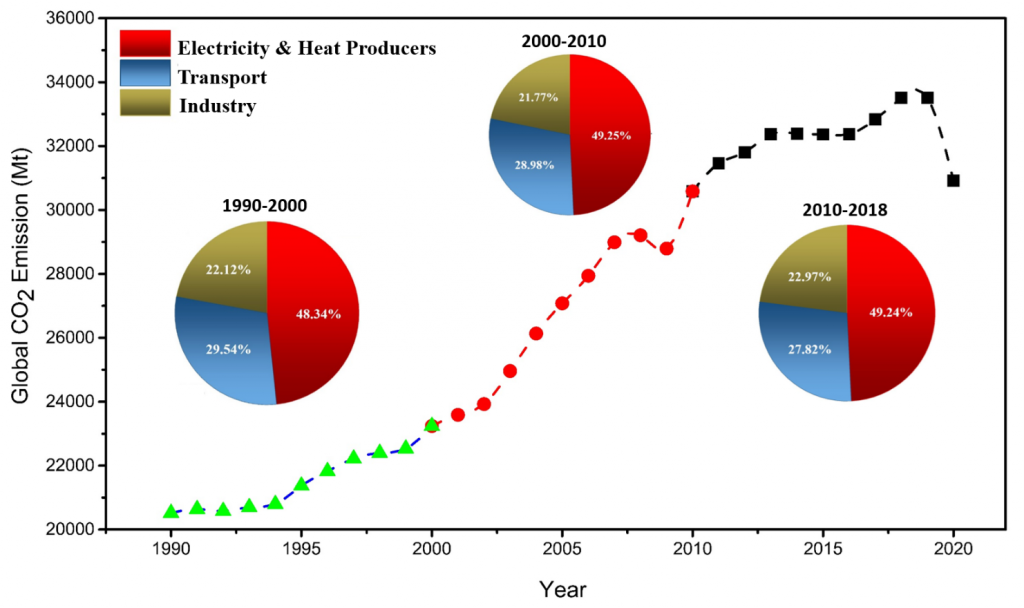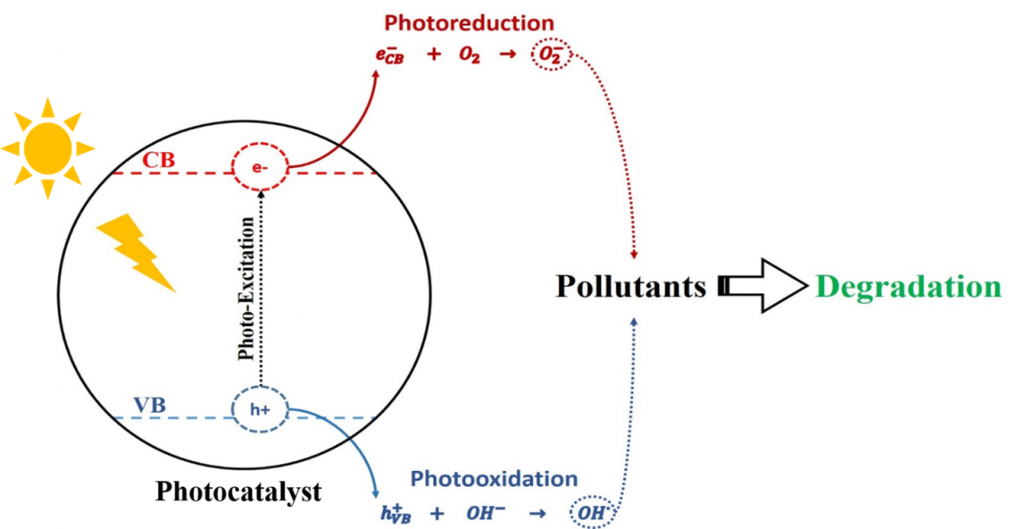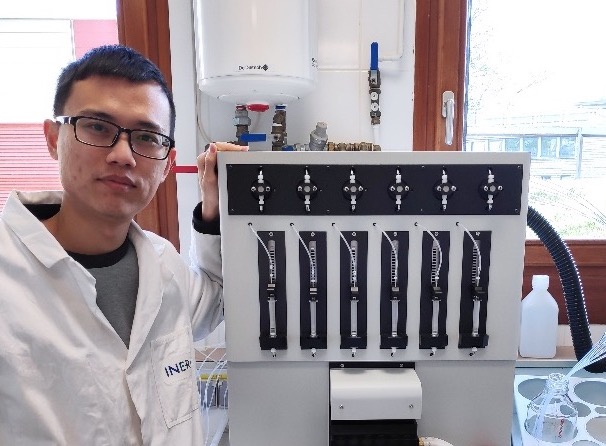 Energy transition, CO2 emission, sustainable development, circular economy, renewables are some of the main buzz words which we have heard very often during the last decade. Ever wondered why these words are important and how they are related to our daily life chores? Let’s try to dissect this broader topic of role of renewables in the sustainable growth.
Energy transition, CO2 emission, sustainable development, circular economy, renewables are some of the main buzz words which we have heard very often during the last decade. Ever wondered why these words are important and how they are related to our daily life chores? Let’s try to dissect this broader topic of role of renewables in the sustainable growth.
Importance of Renewable Energies:
Our planet is now a global village in which everyone is connected through different means of communication and transportation. We have witnessed a phenomenal growth in technological advancement and industrialization but everything comes at a cost, and the cost of this modernized world is visible by the changing environment around us. Technology has evolved over the years for the betterment of humankind, however, some of its effect is now seen as an adversity for earth’s atmosphere. One of the major problem of this technological evolution is global warming, that is the rise in temperature of our planet earth. Greenhouse gases are one of the major contributors in global warming among which carbon dioxide (CO2) is at the top of the list due to its enormous amount of production mainly through natural and synthetic routes1. Since 1990 till 2019, there is roughly 83% increase in the global CO2 emission (figure 1) with an average annual increase in the range of 0.5-2.5%2, these staggering figures are alarming threats for a green future.

Figure 1: Global CO2 Emission between 1990-2020 in Mega tonnes (Mt), the inset pie charts show the contribution of different sectors in the emission during last 3 decades. Data Source: International Energy Agency (IEA)
Energy production, industrial and transportation sector accounts for the major portion (figure 1) in global CO2 emission, by keeping in view of United Nations (UN) sustainable development goals and the road map given by Paris climate agreement the world is now focusing towards the transition to eco-friendly technology which has minimum carbon footprint. Advanced countries have devised legal framework to curtail the CO2 emission and are also incentivizing different sectors to use eco-friendly processes3.

Figure 2: Renewable Energy Production between 2015-2019 and showing the constituent components in the overall production. Data source: International Energy Agency (IEA).
Energy sector has experienced the major shift in its approach to meet the energy demand by adding renewable resources for energy production which are shown in figure 2. Apart from hydro-electricity which is considered as the conventional energy production route, the increase in solar and wind energy is also huge over the last two decades. The overall increase in the electricity production through renewable resources is increasing impressively and till 2019 the total share of renewables in the global energy production is at 26%4 which is appreciable. COVID-19 restrictions and its consequences on the economic activities gave us a break to rethink our strategy for the inclusion of renewables in the overall energy mix5. Let’s hope in the coming decade we can move towards an ecosystem in which there are more opportunities for sustainable growth specially in the energy sector.
Role of Solar Energy in Wastewater Treatment Technologies:
Effective or efficient wastewater treatment is one of the key areas to work on for the UN’s SDG of providing clean water and sanitation by 2030. Water pollution is an ever growing concern for human and aquatic life sustenance, improper treatment of domestic and industrial wastewater leads to the quality deterioration of ground and surface water6. On the other hand, water scarcity due to the depletion of fresh water resources especially in the water stressed countries has put more emphasis on wastewater treatment issue7. Conventional wastewater treatment process involves physical, chemical and biological procedures8 to remove harmful pollutants from the wastewater, however, a minute concentration of lethal pollutants is still present in most of the cases. This class of pollutants which are present in minute concentration (ngL-1 to µgL-1) and also left out untreated by the conventional processes is called as micro-pollutants9. Pharmaceutical compounds are the major contributors in this category due to the addition of advanced therapeutics for dealing with sophisticated and drug resistive diseases. Micro-pollutant treatment is currently one of the major area of research in wastewater treatment and researchers are exploring different routes through which we can get rid of these harmful compounds. Electrochemical advanced oxidation process (eAOP) is one of the methods which has great prospect to deal with this issue. It involves the supply of electrical energy to generate reactive oxygen species (ROS) which are hydroxyl radicals (OH*) in most of the cases, that directly attack the micro pollutants for their removal from the matrix10. Though the effect of degradation products on the efficiency of the system is still debatable and is being researched by the scientific community but, nonetheless, this process still holds the potential to remove micro-pollutants from the wastewater effectively.
To make the eAOPs more sustainable and eco-friendly, researchers have tried to use materials that can generate the OH* through incoming solar sunlight so that the dependence on providing the electricity from external sources can be minimized. Such materials which are used for this purpose are called as photocatalysts, these materials are activated by the incoming solar radiations and produce pair of holes and electrons (excitons) which are used to generate the OH* through the oxidation of water molecules adsorbed on the surface of photocatalytic material11. Figure 3 shows a simplified scheme in which sunlight produces ROS through exciton generation and the ultimate pollutant degradation with the help of ROS. The photocatalytic material is not involved directly in any chemical reaction, it just facilitates its occurrence by generating excitons, thus creating an eco-friendly system without the reliance on the electricity from external sources. In InnovEOX we are trying to develop such a wastewater treatment reactor which can independently operate on solar energy. Doesn’t it sound interesting? Let’s keep it as a curiosity for the next time.

Figure 3: An illustrative diagram showing the mode of action under solar sunlight for pollutant degradation.
Work Cited from:
- Udara Willhelm Abeydeera, L. H., Wadu Mesthrige, J. & Samarasinghalage, T. I. Global Research on Carbon Emissions: A Scientometric Review. Sustainability 11, 3972 (2019).
- Renewable Power – Analysis. IEA https://www.iea.org/reports/renewable-power.
- EU progress towards its climate change goals (infographic) | News | European Parliament. https://www.europarl.europa.eu/news/en/headlines/society/20180706STO07407/eu-progress-towards-its-climate-change-goals-infographic (2018).
- Data & Statistics. IEA https://www.iea.org/data-and-statistics.
- Liu, Z. et al. Near-real-time monitoring of global CO2 emissions reveals the effects of the COVID-19 pandemic. Nat. Commun. 11, 5172 (2020).
- Boretti, A. & Rosa, L. Reassessing the projections of the World Water Development Report. Npj Clean Water 2, 15 (2019).
- Water Scarcity | Threats | WWF. World Wildlife Fund https://www.worldwildlife.org/threats/water-scarcity.
- Muralikrishna, I. V. & Manickam, V. Wastewater Treatment Technologies. in Environmental Management 249–293 (Elsevier, 2017). doi:10.1016/B978-0-12-811989-1.00012-9.
- Margot, J., Rossi, L., Barry, D. A. & Holliger, C. A review of the fate of micropollutants in wastewater treatment plants: Micropollutants in wastewater treatment plants. Wiley Interdiscip. Rev. Water 2, 457–487 (2015).
- Chaplin, B. P. Critical review of electrochemical advanced oxidation processes for water treatment applications. Env. Sci Process. Impacts 16, 1182–1203 (2014).
- Orimolade, B. O. & Arotiba, O. A. Bismuth vanadate in photoelectrocatalytic water treatment systems for the degradation of organics: A review on recent trends. J. Electroanal. Chem. 878, 114724 (2020).

Zeeshan Ali is a physical chemist and materials engineer with the main aim of providing sustainable scientific solutions for a green future. He completed his bachelors in metallurgy and materials engineering from his homeland Pakistan with a specialization in surface science and tribology. After completing his bachelors, he moved to Europe and carried out a joint master degree in Chemistry from France and Portugal under SERP+ (Erasmus Mundus) program. He completed his master thesis in the field of photo-electrochemistry in which he investigated the organic ways of boosting the efficiency of dye-sensitized solar cells (DSSC).
He has joined the Water Management group at TU Delft as an Early Stage Researcher (ESR) under InnovEOX project.
 InnovEOX Innovative Electrochemical OXidation Processes for the Removal and Analysis of micro-pollutants in water streams
InnovEOX Innovative Electrochemical OXidation Processes for the Removal and Analysis of micro-pollutants in water streams



